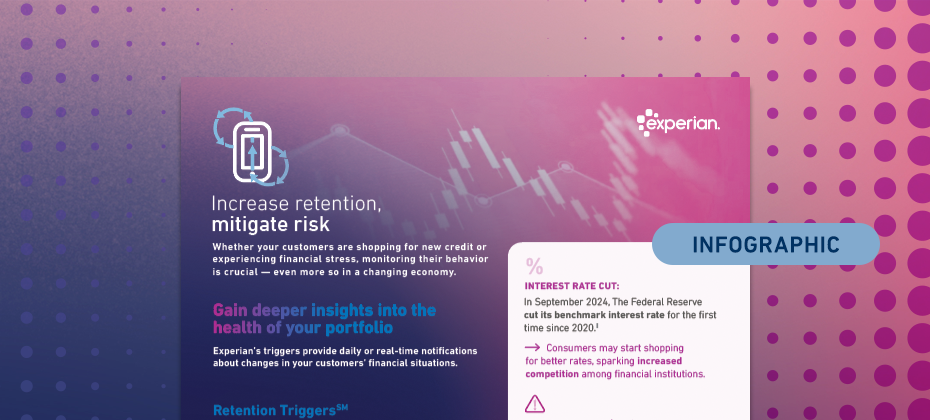 Credit cards are the most widely available credit products offered to millions of consumers today. For many consumers, owning a credit card is a relatively simple step toward establishing credit history and obtaining access to other lending products later in life. For credit unions, offering a credit card to members expands and enriches the credit relationship. In today’s environment, some credit unions don’t view credit cards as an integral part of their member service. I propose that the benefits of credit cards in a credit union portfolio are impactful, meaningful and fully align to member outreach and community service.
Credit cards are the most widely available credit products offered to millions of consumers today. For many consumers, owning a credit card is a relatively simple step toward establishing credit history and obtaining access to other lending products later in life. For credit unions, offering a credit card to members expands and enriches the credit relationship. In today’s environment, some credit unions don’t view credit cards as an integral part of their member service. I propose that the benefits of credit cards in a credit union portfolio are impactful, meaningful and fully align to member outreach and community service.
A high-level review of risk-adjusted yields across three of the most common retail products offered by credit unions show that credit cards can be very profitable. The average APR of credit cards as of Q3 2020 is just slightly below personal loans. While charge-offs as a percentage of balances are more than double of personal loans, the estimated risk-adjusted yield is still elevated and is 1.8 times higher than auto loan and leases. See Table 1.
Table 1. Estimated average risk-adjusted yield for auto loan and lease, personal loan, and credit card for credit unions
| Auto loan and lease | Personal loan | Credit card | |
| Average APR | 5.21% | 12.05% | 11.26% |
| Charge-offs as % of balances (annualized)
|
0.28%
|
0.89%
|
1.98%
|
| Risk-adjusted yield | 4.93% | 11.16% | 9.28% |
Notes:
-
Average APR of auto loans and leases, personal loans, and charge-off information as of Q3 2020 was extracted from Experian-Oliver Wyman IntelliViewSM Market Intelligence Reports. IntelliView Market Intelligence Reports, Dec. 22, 2020, experian.com/decision-analytics/market-intelligence/intelliview.
-
Average APR of credit card as of Q3 2020 was extracted from National Credit Union Administration website. Credit Union and Bank Rates 2020 Q3, Dec. 22, 2020, https://www.ncua.gov/analysis/cuso-economic-data/credit-union-bank-rates/credit-union-and-bank-rates-2020-q3.
-
Estimated risk-adjusted yield is calculated as the difference between average APR and charge-offs.
A profitable retail product allows a credit union to share those profits back with members consistent with its mission of promoting and supporting the financial health and well-being of its members.
Credit cards provide diversification of income streams. Income diversification provides a level of stability across cyclical economic conditions when some types of credit exposures may perform poorly, while others may be more stable. When combined with sound and effective risk governance, credit diversification allows lenders to mitigate levels of concentration risks in their aggregate portfolio.
Offering credit cards to members is one avenue to grow loan volume and achieve scale that’s sufficiently manageable for credit unions. Scale is particularly important today as it’s needed to fund technology investments. The pandemic accelerated the massive movement toward digital engagement, and scale makes technology investments more cost-effective. When lenders become more productive and efficient, they further lower the cost of credit products to members. (Stovall, Nathan. Dec. 14, 2020. Desire to compete with megabanks driving more U.S. regional bank M&A — KBW CE blog. https://platform.mi.spglobal.com/web/client?auth=inherit#news/.)
The barriers to offering credit cards have moderately declined. Technology partners, payment processors and specialized industry companies are available in the marketplace. The biggest challenge for credit unions and lenders is credit risk management. To be profitable and to stay relevant, credit cards require a relatively sophisticated risk management framework of underwriting criteria, pricing, credit line management, operations and marketing. Industry and specialized support for launching and managing credit cards is widely available and accessible. Analytics play an essential role in managing credit cards. With an average active life of approximately five years, credit card portfolios need regular and periodic performance reviews to manage inherent risk and to identify opportunities for growth and profitability. Account management for credit cards is equally as important as underwriting. Credit line management, authorization, activation and retention have significant impact to the performance of existing accounts.
Continuous engagement with members is critical and has taken on a new meaning lately. Credit cards provide an opportunity to engage members, to grow lending relationships and to support financial well-being. Marketing and meaningful card offers drive card usage and relevance. They’re critical components in customer communication and service.
The benefits of credit cards contribute positively to a credit union portfolio. With sound and effective risk management practices, credit cards are profitable, help diversify income streams, grow loan volume and support member credit needs.


